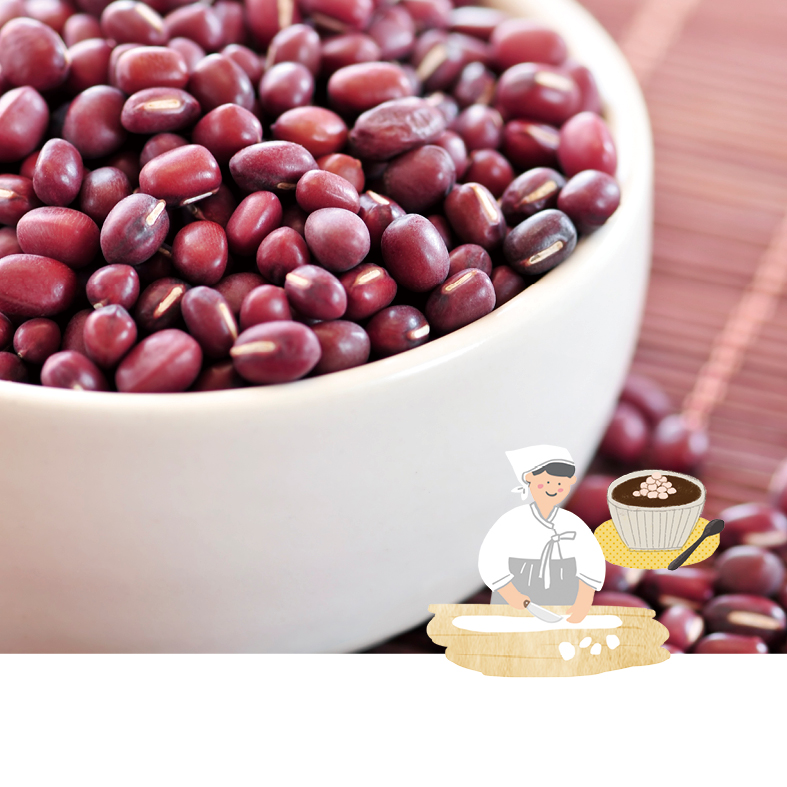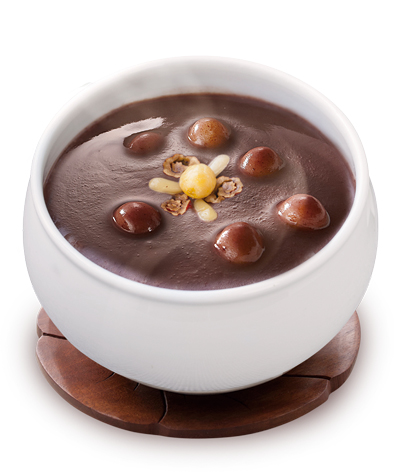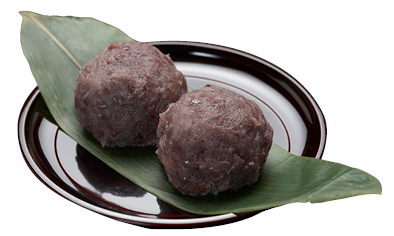한식 읽기 좋은 날
Vol 46. Rediscovery of Pat
Korea’s Representative Talisman Grain, “Pat” ─ Driving Away Evil Spirits and Bad Fortune, and Shaking Off Heat and Cold
Joy of Red Beans
The red and hard grain wields more power than we think. Our people believed that they could protect their health from evil spirits that spread epidemics by making juk(porridge) or tteok(rice cake) with pat on Dongji(winter solstice), or ward off bad luck if they sprinkled red beans or patjuk(red bean porridge) on the door or wood-burning stove. It is unknown whether pat actually has the magical power to drive away bad luck, but it has been protecting the body and mind of our people by demonstrating various effects, as well as the nutrition that it has.

Pat is a very familiar grain to the Korean people as it often appears in folk tales. Traces of the red beans dating back 7,000 years were discovered at a prehistoric site in Yangyang, Gangwon-do a few years ago, demonstrating the long history of red bean cultivation on the Korean Peninsula. Pat is a multigrain that has been used in a variety of dishes for its nutty flavor and unique texture. It is still widely popular today.

When you think of “pat,” the solar term Dongji(冬至: winter solstice), which means “the arrival of true winter,” comes to mind. It comes between Daeseol and Sohan. Dongji falls on December 22nd or 23rd on the solar calendar. It was considered “the day when the sun is resurrected” in the past as the night is the longest and the day gradually gets longer afterward, thereby making it the first day of the year. The old saying, “You get a year older only when you eat Dongji patjuk,” is an expression derived from the long-standing custom of Dongji, which was called “little New Year” after the New Year.
On Lunar New Year's Day, people make tteokguk(sliced rice cake soup) by adding thinly sliced clean garaetteok(rice cake stick) into a clear soup and boiling it. After offering it to their ancestors, they pray for peace and good health in the new year by sharing and eating it together. If tteokguk is served as sacrificial food, the red bean porridge eaten on Dongji served as a talisman that wards off negative energy, such as evil spirits and the yin vibe. In the past, people in private homes would offer a bowl of patjuk made by finely grinding and boiling the red beans, and placing it in each room, the croaker platform, and the barn to offer to the deities of the house that guard it. When it cooled, the family would share and eat it together. It was sometimes sprinkled on the gate or the wall near the door where people came and went. This is a shamanistic ritual to ward off evil spirits. Moreover, depending on the region, people used Dongji patjuk to predict the next year’s farming. When the patjuk went bad due to a hot day, people thought the following year’s harvest would be bountiful.


The red color, which symbolizes the sun, fire, and blood, has been the color of the “yang”(positive energy) since ancient times and believed to have the power to ward off evil spirits and drive out bad luck having the energy of “yin.” This belief has also given the red beans the symbolic meaning as the representative red grain. The custom of eating red bean porridge on winter solstice was passed down not only in Korea, but also in China and Japan. Its origins can be traced back to the Chinese classic literature, <Hyungcho Sesigi>.In ancient China, the river god Gonggong had an immature son. He died on Dongji and came back as a ghost spreading smallpox, thus causing havoc in the village. Gonggong said, “My son didn’t like red beans when he was alive.” So the villagers made patjuk and drove the evil spirit away. It is not known whether the Chinese custom derived from the story was passed down to the Korean Peninsula, but considering that there is a content about people eating patjuk on Dongji in <Mokeunjip> and <Ikjaejip>, the literatures from Goryeo Dynasty, we can see that it had already become a seasonal dish at the time. Moreover, people believed that putting red beans in the village well during an epidemic would clear the water and eliminate diseases. As a result, red beans were placed into a pillow when a person sweated a lot while sleeping. Pat was used diversely not only in patjuk on Dongji, but also as susupattteok(red beans and sorghum rice cake) served on the 100th day celebration or 1st birthday of babies, and sirutteok(red bean steamed rice cake) on important days, such as moving day or business opening day, thus bringing comfort to those who wished for a peaceful life.


Pat, which grows well in a barren land, was a hunger crop that alleviated starvation and served as a medium that formed friendships between neighbors. In the past, there was a tradition of making red bean porridge when someone dies in a neighbor's house and making an offering with it. This contained the hearts of the neighbors who were worried about evil spirits entering the funeral, as well as the health of the chief mourner of the funeral, who was engulfed in sorrow. Furthermore, in the Annals of the Joseon Dynasty, there is a record of King Yeongjo leaving the palace on Dongji and bringing in beggars from Jongno to feed them patjuk on his way back to the palace. In fact, pat contains the highest amount of vitamin B1 among grains that are involved in the body's energy metabolism and in the relief of lethargy or fatigue. The saponins and potassium found in red beans help in boosting immunity during the cold winter with excellent effects on reducing swelling from salt intake. Moreover, the protein content found in red beans is 6 times that of milk and iron is 117 times that of milk. Therefore, it is considered as a food with a very high nutritional value. Our ancestors knew this effect of red beans early on. According to the record in Sambokjo in <Dongguk Sesigi>, it was customary to “make a red bean porridge and eat it on Chobok, Jungbok, and Malbok.” We can see that there was a tradition of eating patjuk on hot days in the Joseon Dynasty. Also, saealsim(small glutinous rice balls) were added in patjuk, a good food combination because it can relieve the cold properties of red beans and warm up the stomach.
Meanwhile, during the Japanese colonial period, sweet red bean paste and Japanese confectionery technology were introduced to Korea. In addition to staple dishes, such as patjuk and patbap, it is also used in various snacks, such as red bean bread, walnut cakes, bungeopang(fish-shaped bun), gukhwapang(chrysanthemum-shaped bun), patbingsu(shaved ice with red bean topping), etc., evolving into a grain that is familiar to everyone. Pat, a multigrain that is both tasty and healthy, is expected to continue its popularity in the future due to its various benefits.











